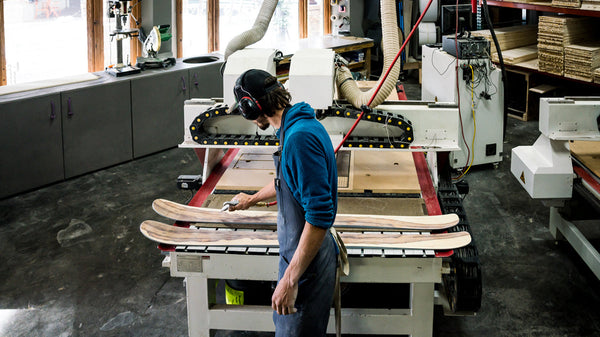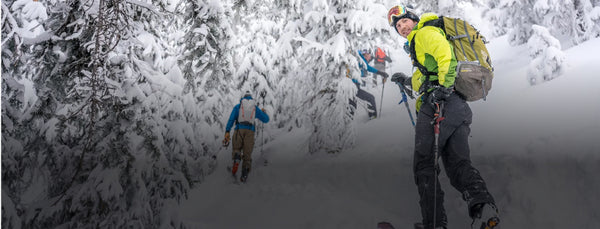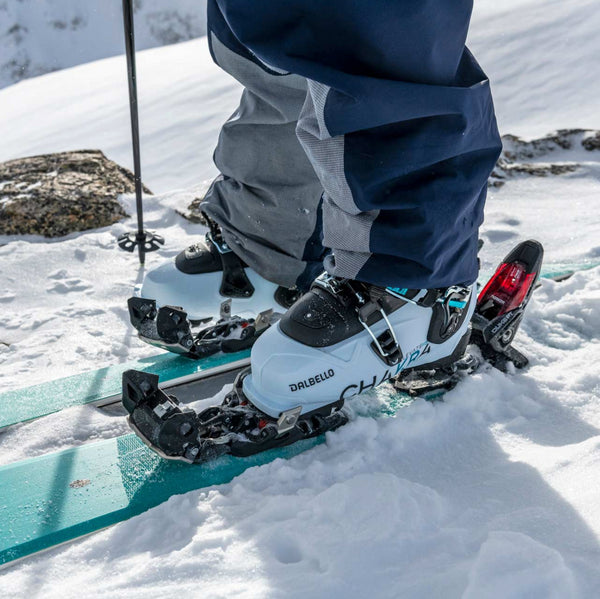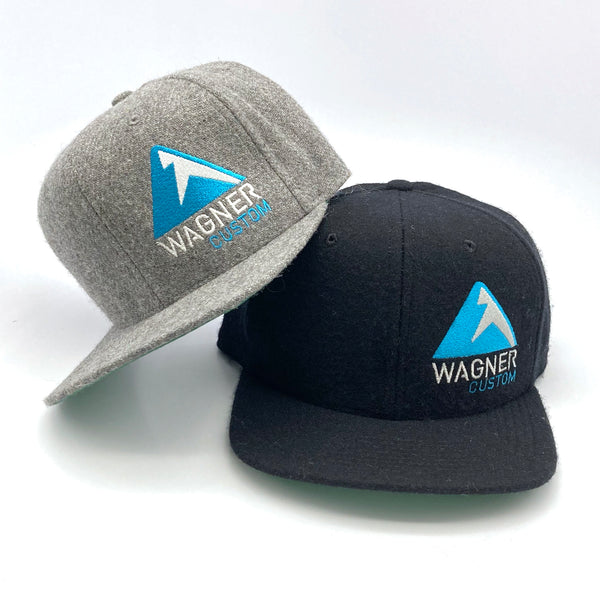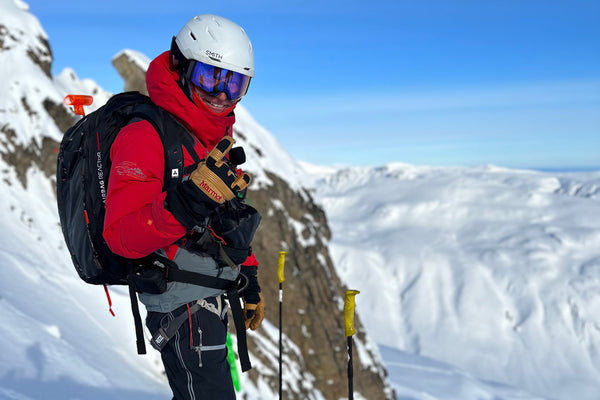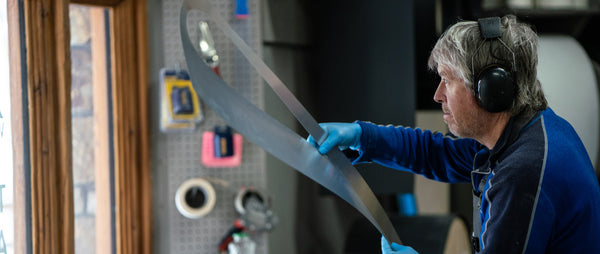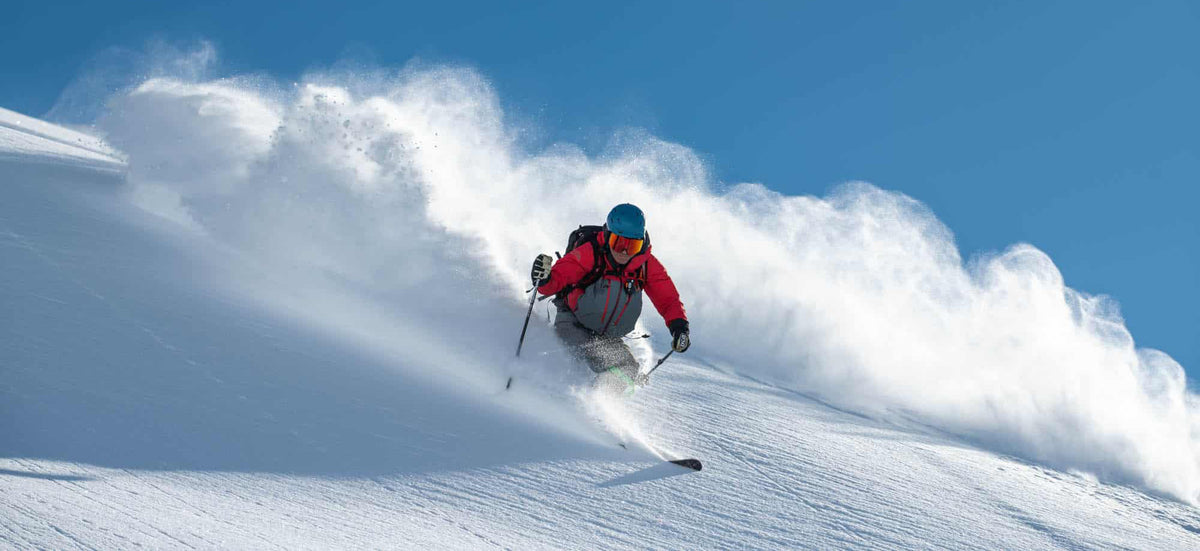
Tips from Tommy Moe
We skiers all have our own version of what a dream ski trip would be—schussing down the Alps between plates of raclette and glasses of grappa, ski-mountaineering on Denali, or purring through deep B.C. powder.
But whatever your dream may be, we’re pretty sure this is one we all share: Jumping out of a helicopter on top of a peak in Alaska’s Tordrillo Mountains guided by Olympic gold and silver medalist Tommy Moe and shredding pristine pow on a pair of Wagner Custom skis.
Believe it or not, this is a dream you can turn into reality—book a trip at the Tordrillo Mountain Lodge, which Moe co-owns with his partner, Mike Overcast. We have been there and done that (Wagner makes all the skis for the lodge), and we can assure you it is the most fun you can have on this planet.

Tordrillo Mountain Lodge guide (and former Olympian) Tommy Moe. Photo: Tordrillo Mountain Lodge
Aside from the blower powder, incredible cuisine, outdoor hot tubs, and lakeside sauna, one of the best parts of the experience is Moe himself. He’s gregarious, hilarious, and (obviously) an insane skier. But for those of you who might be intimidated by skiing big Alaskan peaks with a legend, fear not: This tenured guide doesn’t just lead you to the pow—he helps you ski it.
Our “Next Level” podcast pundit Jason Blevins interviewed Moe a few years back to find out what some of his best tips and tricks are for his guests. (Listen to the full podcast episode here.) As for what Blevins didn’t ask, like where Moe keeps those hard-earned medals, well, the dude has powder to ski. So, naturally, they’re somewhere in his sock drawer.
Blevins: How did you get into the sport? Your dad was on the ski patrol, I think?
Moe: I was born in Missoula, Mont., and started skiing at a young age. I still remember skiing between my dad’s legs and learning how to snow-plow. I remember being in school daydreaming out the window about getting back on the mountain. Then I started racing, and from that early age I had a desire and passion for the slopes. I just loved the speed and freedom. It was a magical experience.
Blevins: You made the U.S. Ski Team at a very young age. How did that happen?
Moe: I moved from Montana when I was 12 to Alaska and started going to a ski academy at Girdwood, and that’s where I really started improving. When I made the U.S. Ski Team, I was traveling to Europe with Bill Johnson and Doug Lewis and Mike Brown, and I got some valid experience at a young age racing World Cup at age 17. But I paid my dues before I had success, that’s for sure.

Tommy Moe gets high in the Olympics. Photo by Jonathan Selkowitz
Blevins: You grew up skiing with people who were better than you. Was that one of the keys to your success?
Moe: I definitely always had mentors growing up in Montana. I remember, when I was on the ski team, there were guys who were older and I looked up to them. I remember watching a downhill race and thinking I couldn’t wait to get a downhill suit. From an early age I knew I wanted to be a downhill racer. I remember watching Phil and Steve Maher and Ingemar Stenmark. I always dreamed about being in the Olympics and was lucky enough to be in three. I was the second American to win the Olympic downhill.
Blevins: What do you remember about chasing Phil and Steve? Did you ever say, “Oh wow, that’s what I aspire to do”?
Moe: I remember when I was in Mt. Hood when I was prob 12 years old, and Phil and Steve talked to us and told us stories about being on the world cup and racing in the Olympics. And it was so powerful to have those mentors. I always had that desire to want to keep up and be better, and it was definitely a big, driving force that somebody was always better.

Look no further for a mentor at Tordrillo Mountain Lodge. Photo: Tordrillo Mountain Lodge
Blevins: How can regular skiers out there find a mentor?
Moe: There’s a bunch of different avenues. If you’re just a weekend skier, you can improve by skiing with your buddies. There’s always someone who’s better than you. If you watch them ski from the chairlift, you can pick up on little techniques that can help you improve. With skiing, it’s usually just one thing at a time: Keep your hands forward, stand more on your outside ski, keep your upper body facing down the hill.
Another avenue is to hire a ski instructor or even go to a ski camp. If you throw in video, even if it’s with your iPhone, you can get to the nuts and bolts of your technique. It’s one of the greatest ways to see what’s happening in your skiing. It’s also important to be in an environment that’s comfortable to be relaxed and have fun. If you listen and just focus on the technique and have a good time, your skiing will drastically improve.
Blevins: Do you remember a specific deficiency you overcame?
Moe: When I was a younger skier, I had a loose style. I was super aggressive, but I always leaned in, and my arms looked like bird wings. My hands were out at my sides, so when I started really improving, I moved my hands forward and had a more relaxed upper body. But what helped me the most was angulation—which is upper- and lower-body separation. Your upper body stays stationary and calm and facing down the slope, and then from your hips down, that’s where all the action happens. Once I figured out the angulation, it really translated into more powerful and dynamic turns.
With skis these days, you can lean in and drag your hand in the snow. Twenty years ago, you’d make a turn and your ski would track out or boot out. Now, the construction is so different, you can lay your hip on the snow and drag your hand and you never lose your outside ski.
Blevins: New tech has made it so much easier. It’s now a two-foot deal.
Moe: Back in the ’80s and ’90s, we were standing on the outside ski, and our inside ski was off the snow. Now, you’re putting 60% of your weight on the outside. When you look at a good World Cup skier, it’s almost like there’s two parallel railroad tracks in the snow. It’s awesome. In powder it’s different: You ski on both feet but both skis are doing the same thing. It’s a constant act of recovery and balance. That’s the beauty of skiing.

Tommy hard at work at Tordrillo Mountain Lodge. Photo: Tordrillo Mountain Lodge
Blevins: Yeah, a series of controlled recoveries. That’s the story of my life. Do you have clients who ask for help to get better?
Moe: I like it when people ask for advice. In skiing, you have to keep it simple. If you’re powder skiing, keep weight on both feet. Narrow your stance a little so you can porpoise through the powder. When you’re powder skiing, it’s all about the rhythm, and you get this euphoric feeling. There are other times when it’s challenging, when it’s icy, crusty, or windblown. That’s when you see if people have the technique or not.
If I see somebody that’s having a hard time, I’ll give them some pointers. Be more aggressive, try to press on the front of your boot. Think about trying to hold a $100 bill between your shin and your boot, so the energy is going down into the shovel of your ski. A lot of times when people get on challenging or steep terrain, it’s normal for them to lean back. You want to always be on the offensive, moving perpendicular to the slope. A lot of times you can tell if people are intimidated if their legs are burned out. The quickest way to sizzle your legs is to lean back and fight it. If you want to improve, you definitely have to work on it. there’s no easy way about it.
To hear the rest, listen to the full podcast episode, and check out others with Michelle Parker, Mark Abma, Mike Douglas, and more of our sport’s greatest heroes.
--
Article by Kimberly Beekman, Next Level Skiing Podcast recorded by Jason Blevins
Kimberly Beekman is the former editor-in-chief of the late, great Skiing Magazine (RIP), and a longtime editor of SKI Magazine before that. She currently uses the title of “freelancer” as a beard to ski powder all over the world. She lives in Steamboat, Colorado, with her wonderful daughter and terrible cat.

